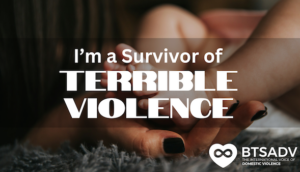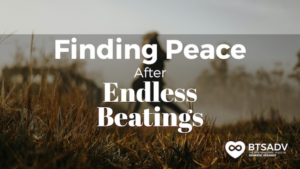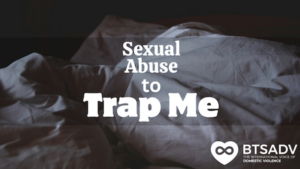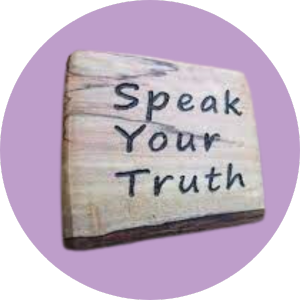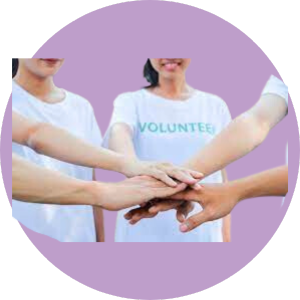“It’s the most wonderful time of the year…” or is it? The holidays are often thought of as a magical time, filled with family get-togethers, time off work, and the joy of giving and receiving gifts.
Despite the jolly perks, this time of the year can also be very tense due to the financial strain of gifts, the pressure to entertain, conversations with relatives you may not get along with, and an increased level of alcohol consumption.
Unfortunately, for many survivors of domestic violence (DV), the holidays can be more than just stressful– they can be dangerous. And when social isolation due to the COVID-19 pandemic is added to the mix, they can even be deadly.
Does Domestic Violence Increase During the Holidays?
When conducting a quick google search about whether or not DV increases during the holiday season, I was surprised to find many sources stating that it did not. After all, holidays are a stressful time of the year– according to one Harvard study, 62% of respondents reported their level of stress as “very or somewhat” elevated during the holiday season [3]. And, not surprisingly, stress, or trauma, is a significant risk factor for increasing instances of DV [1].
So, if the holidays are strained, and stress contributes to an increase in violence, why are calls to hotlines and DV related police reports down during this season [4]? The answer: statistics do not always tell the whole story.
There are many possibilities for why there is a mismatch between what we expect (an increase in violence) and what the numbers show (no increase/possible decrease).
Call numbers are low. But why?
Because the holidays are supposed to be a happy time, full of hope, some victims may feel they need to “act the part.” Or, abusers could similarly use that sense of hope, believing they may be able to change their behavior. As Michelle Kaminsky, chief of a Domestic Violence Bureau, puts it, “I don’t know what the numbers mean. It could be that people aren’t reporting, and in fact, violence is going on. It could be that people are on their best behavior during the holidays. It’s really hard to say [5].”
Another possibility is that victims may have a difficult time contacting help via the police or a DV hotline when their partner is off work and home for the holidays.
At least for some impacted by DV, the holidays are a dangerous, anxiety-inducing time. One survivor of DV, Charlotte Kneer, stated her experiences with the holiday season, “It’s the hardest time of year. The violence is so much more poignant. Everyone ran around to make sure [her abuser] didn’t get upset. They were hyper-vigilant to whether he was going to lose it [6].”
Jessica, another survivor of DV, remembers how her abuser manipulated her into avoiding her family around the holidays, keeping her isolated. Since escaping abuse, she is appreciative of being free to see her loved ones, “I will never let someone dictate when I can and can’t see [my family] again.”
In the end, it’s very hard to know, for sure, whether or not violence increases during the holidays. However, there is one thing we can recognize: no matter what statistics show, the holidays (with added tension, more time at home, and increased use of alcohol) definitely creates a strong recipe for abuse triggers.
COVID-19 and DV
As discussed, the holidays themselves produce ample amounts of anxiety. However, 2020 has taken things to a whole new level.
We are facing a worldwide pandemic, COVID-19. Talk about stress! A study found that 53% of adults in the US reported the pandemic as causing them to worry, which has been linked to an increase in DV [7].
Here, the statistics align a little more closely to what we expect than what we saw with the holidays. Globally, DV rates have soared since the start of the pandemic. Women in Lebanon reported a 54% increase in violence and DV rose 30% in France [2]. This upward trend is consistent across most of the world.
Yet, there are still untold stories within the statistics. Similar to DV calls decreasing during the holidays, the US hasn’t seen a verifiable increase in rates during the pandemic, and some areas have actually seen a decrease [2].
But, advocates urge us not to fall for any illusions, explaining that the decrease in rates is likely due to the difficult access to resources and reporting opportunities caused by shutdowns. To add, the rate of murder-suicides (defined as a male partner killing a female and then himself) has increased. Referred to by some as a “pandemic within a pandemic,” DV is certainly increasing due to COVID-19 [2].
A Dangerous Mix
The combination of stress and social isolation from the COVID-19 pandemic and the holidays is a dangerous mix for DV survivors.
This year, there will be thousands of DV victims who are unable to find comfort in visiting their family members as an escape from their violent partner. There will be abused mothers who refuse to call for help because they want their children to have a merry Christmas. There will be parents grieving the loss of their child to an abusive relationship. And for many families affected by DV, it will be the hardest time of their year.
If this resonates with you, please contact the National Domestic Violence Hotline, or one of the BTSADV advocates. This season is difficult enough to navigate for those without battle scars, so we hope that you reach out and let us help you carry that additional suffering.
For assistance setting up a DV safety plan for the holidays, or anytime, visit KSAT.com.
For more information about COVID-19 and DV, see guidelines and advice set forth from the CDC.
References
- Abramson, A. (2020, April 8). How COVID-19 may increase domestic violence and child abuse. http://www.apa.org/topics/covid-19/domestic-violence-child-abuse
- Cagle, T. (2020). Domestic violence statistics are surging during the COVID-19 pandemic. Nautilus. https://coronavirus.nautil.us/domestic-violence-statistics/
- Edwards, S. (2020). Holiday stress and the brain. Harvard Medical School. https://neuro.hms.harvard.edu/harvard-mahoney-neuroscience-institute/brain-newsletter/and-brain/holiday-stress-and-brain
- Violence Free Colorado. (2020). Does domestic violence increase during the holidays? https://www.violencefreecolorado.org/2014/12/faq-dv-during-the-holidays/
- Gwynne, K. (2015, January 2). Does domestic violence actually rise during the holidays? Vice. https://www.vice.com/en/article/kwpjwv/does-domestic-violence-actually-rise-during-the-holidays-1201
- Oppenheim, M. (2015, December 22). “It’s the hardest time of the year”: why domestic violence spikes over Christmas. Newstatesman. https://www.newstatesman.com/politics/welfare/2015/12/it-s-hardest-time-year-why-domestic-violence-spikes-over-christmas
- Panchal, N., Kamal, R., Orgera, K., Cox, C., Garfield, R., Hamel, L., Munana, C., Chidambaram, P.(2020). The implications of COVID-19 for mental health and substance use. Kaiser Family Foundation. https://www.kff.org/coronavirus-covid-19/issue-brief/the-implications-of-covid-19-for-mental-health-and-substance-use/
